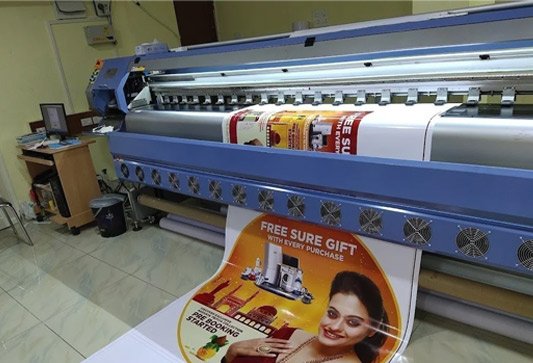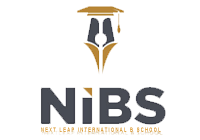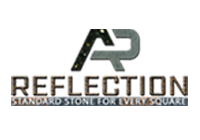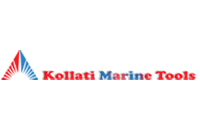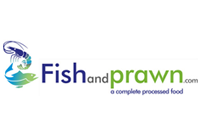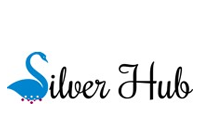Flex Printing
Flex printing is a popular method of printing for large-format advertising materials, such as banners, posters, and billboards. Here’s an overview of everything you need to know about flex printing:
1. Materials Used in Flex Printing
- Flex Material: The primary material used in flex printing is PVC (Polyvinyl Chloride), which is a synthetic plastic polymer. It is flexible, weather-resistant, and durable, making it suitable for both indoor and outdoor applications.
- Types of Flex: There are two main types of flex materials:
- Front-lit Flex: This is used for creating banners and signs that will be illuminated from the front (e.g., store signs).
- Back-lit Flex: This material is designed for signs that will be illuminated from behind, often used in lightboxes and illuminated billboards.
2. Printing Process
- Printers: Large-format printers, especially digital printers, are used for flex printing. These printers utilize either solvent-based or UV-based inks.
- Solvent Inks: These are widely used for flex printing because they adhere well to the PVC material, are durable, and resistant to environmental elements.
- UV Inks: These inks are cured using UV light and are highly resistant to fading and wear. They provide vibrant colors and are eco-friendly.
- Printing Technique: The design or artwork is digitally printed onto the flex material using high-resolution printers. The process allows for intricate designs and full-color printing.
3. Advantages of Flex Printing
- Durability: Flex prints are highly resistant to the elements, including rain, sun, and wind, which is why they are popular for outdoor advertising.
- Cost-Effective: It's a relatively affordable printing method for large-scale projects like banners and hoardings.
- High-Quality Prints: Flex printing produces high-resolution images, which make the prints sharp and vibrant.
- Large-Format Prints: It's ideal for printing large-scale materials, including billboards, vehicle wraps, and large banners.
- Customization: Flex printing allows for a wide range of designs, colors, and formats, which makes it easy to customize advertising materials.
4. Applications of Flex Printing
- Outdoor Advertising: Flex printing is widely used for banners, hoardings, and billboards that are placed in outdoor spaces for advertising campaigns.
- Vehicle Wraps: Flex prints are used to wrap vehicles for mobile advertising. The durable material ensures the wraps stay intact and retain vibrant colors.
- Trade Shows and Events: Flex prints are often used for exhibition displays, event banners, and backdrops.
- Signage: Flex printing is used for making storefront signs, directional signs, and other commercial signage.
- Posters and Hoardings: It's also commonly used for creating large posters and hoardings for both advertising and promotional purposes.
5. Flex Printing Finishing
- Lamination: To enhance durability and protection, the printed flex material is sometimes laminated, which helps protect it from fading due to exposure to sunlight or weather.
- Eyelets & Grommets: For banners, eyelets or grommets are added to the corners of the flex material to make it easier to hang the print securely.
- Cutting: Flex prints are cut to the required size and shape, depending on the design and usage.
- Sealing: In some cases, the edges of the flex are sealed to prevent them from fraying and to extend the lifespan of the print.
6. Environmental Considerations
- While flex printing materials are durable, they are not necessarily eco-friendly. The production and disposal of PVC can be harmful to the environment, so some companies have started to use eco-friendly alternatives like fabric prints or water-based inks.
- However, the durability of flex prints means they last for a long time, reducing the frequency of replacements.
7. Cost of Flex Printing
- Cost Factors: The cost of flex printing depends on several factors, including the size of the print, the type of ink used, the complexity of the design, and the quantity ordered.
- General Price Range: It is generally cheaper than printing on other materials like fabric or vinyl but may vary depending on the scale of the project.
8. Maintenance
- Flex prints are low-maintenance. To keep the print looking fresh, it’s important to regularly clean it if it’s used in an area where it gets dusty or dirty. A damp cloth can be used to wipe off dust and debris.
9. Considerations Before Choosing Flex Printing
- Purpose of the Print: Consider the location (indoor or outdoor), the amount of exposure to weather elements, and how long you need the print to last.
- Design Complexity: High-quality flex printing can reproduce complex designs and vibrant colors, but extremely detailed graphics may be challenging for some printers.
- Budget: For large-scale, cost-effective solutions, flex printing is an excellent option, but if you're looking for more eco-friendly alternatives, you may want to explore other printing methods.
Conclusion
Flex printing is a versatile, durable, and cost-effective option for creating large-scale prints for both indoor and outdoor use. It’s widely used in advertising and signage due to its ability to withstand harsh weather conditions while maintaining high-quality, vibrant prints. However, it’s important to consider factors like the environment and cost when deciding if flex printing is the right choice for your project.
Is there a specific application or aspect of flex printing you'd like to dive deeper into?
